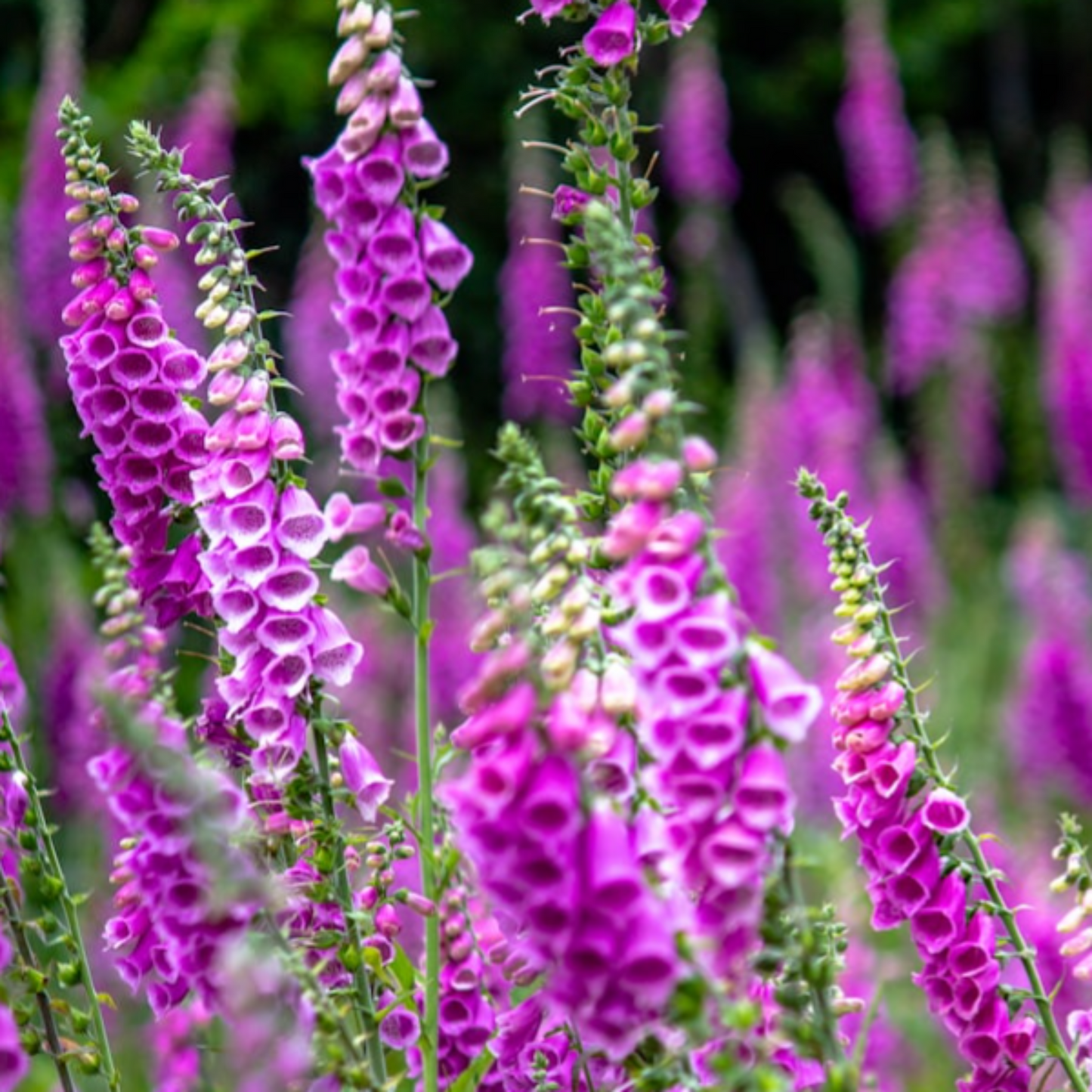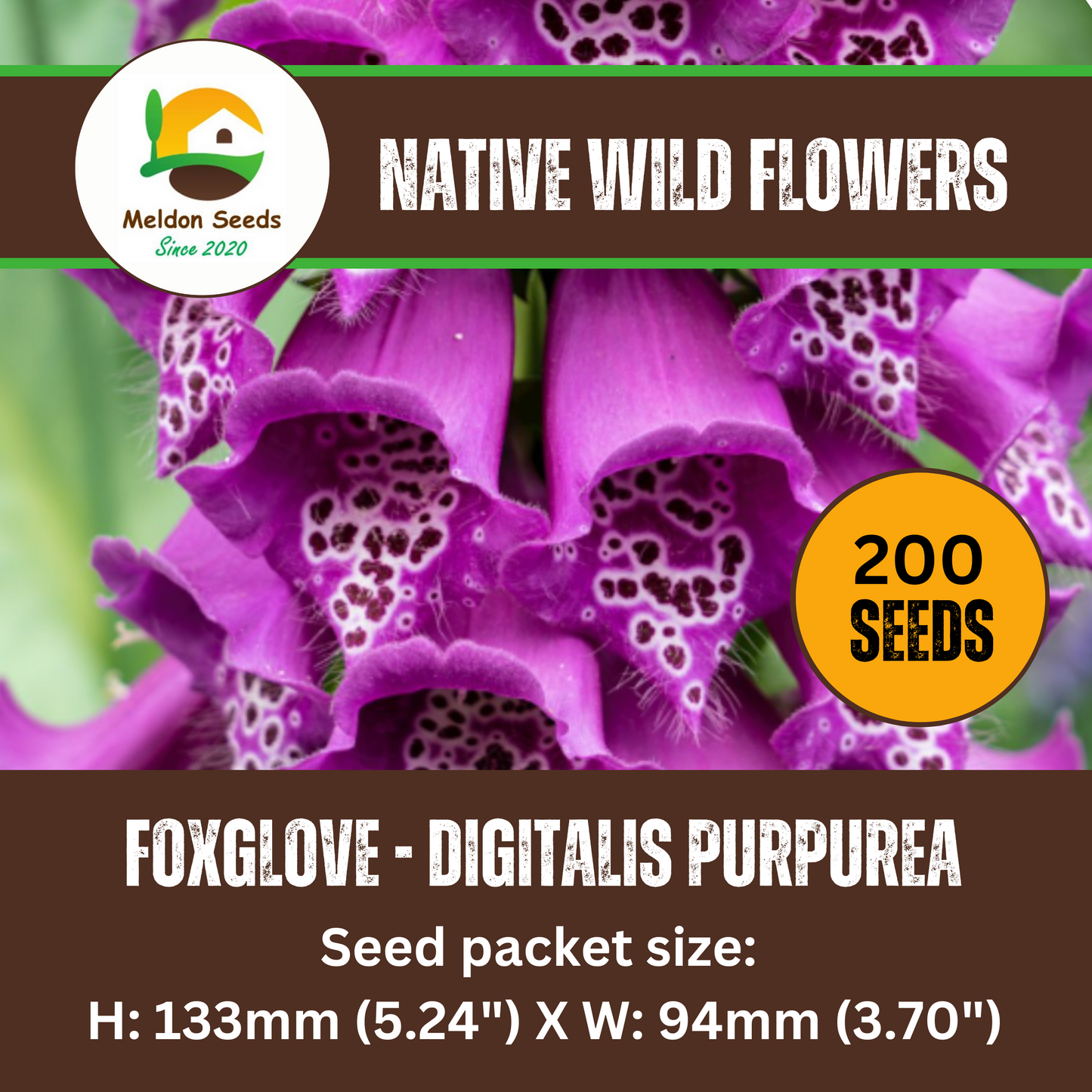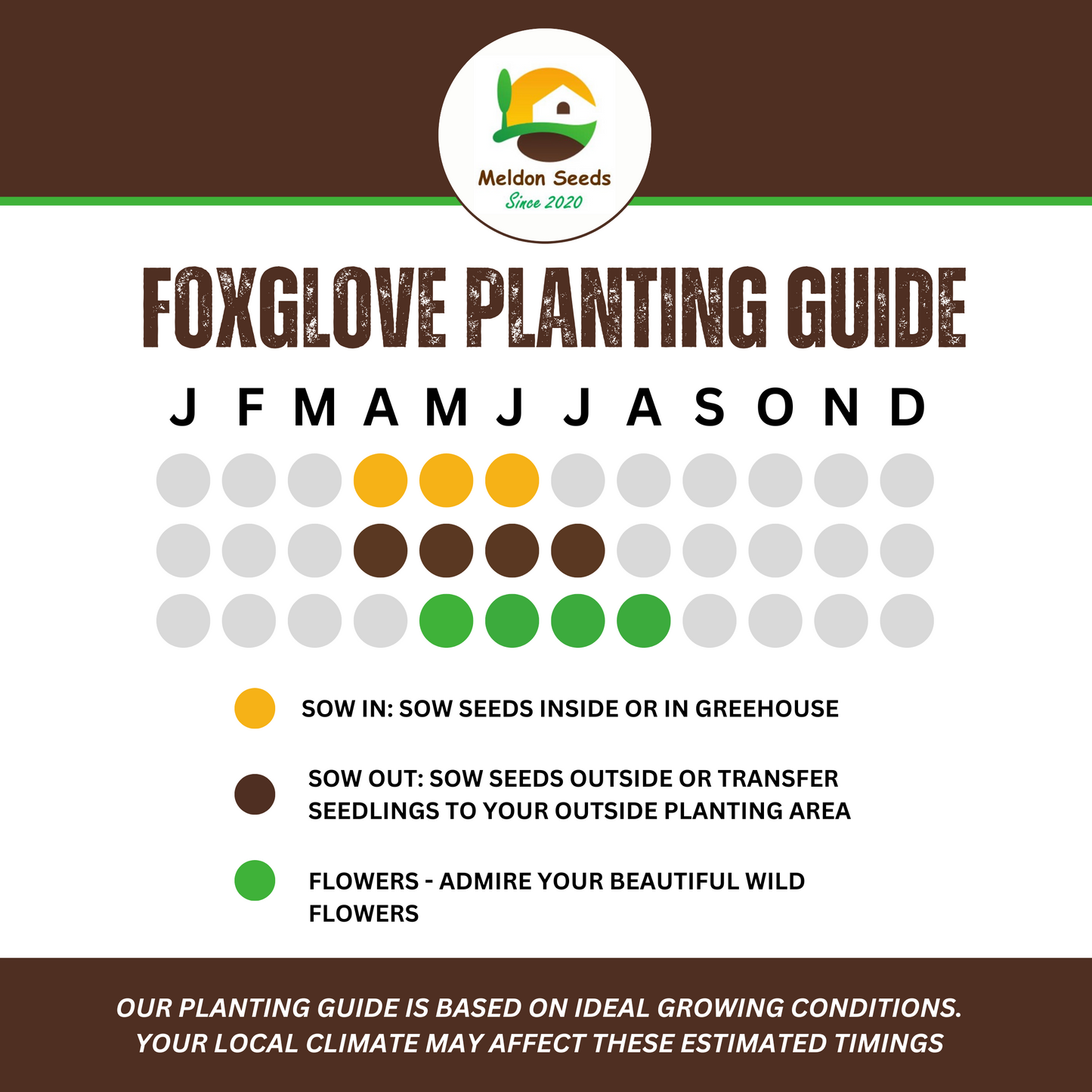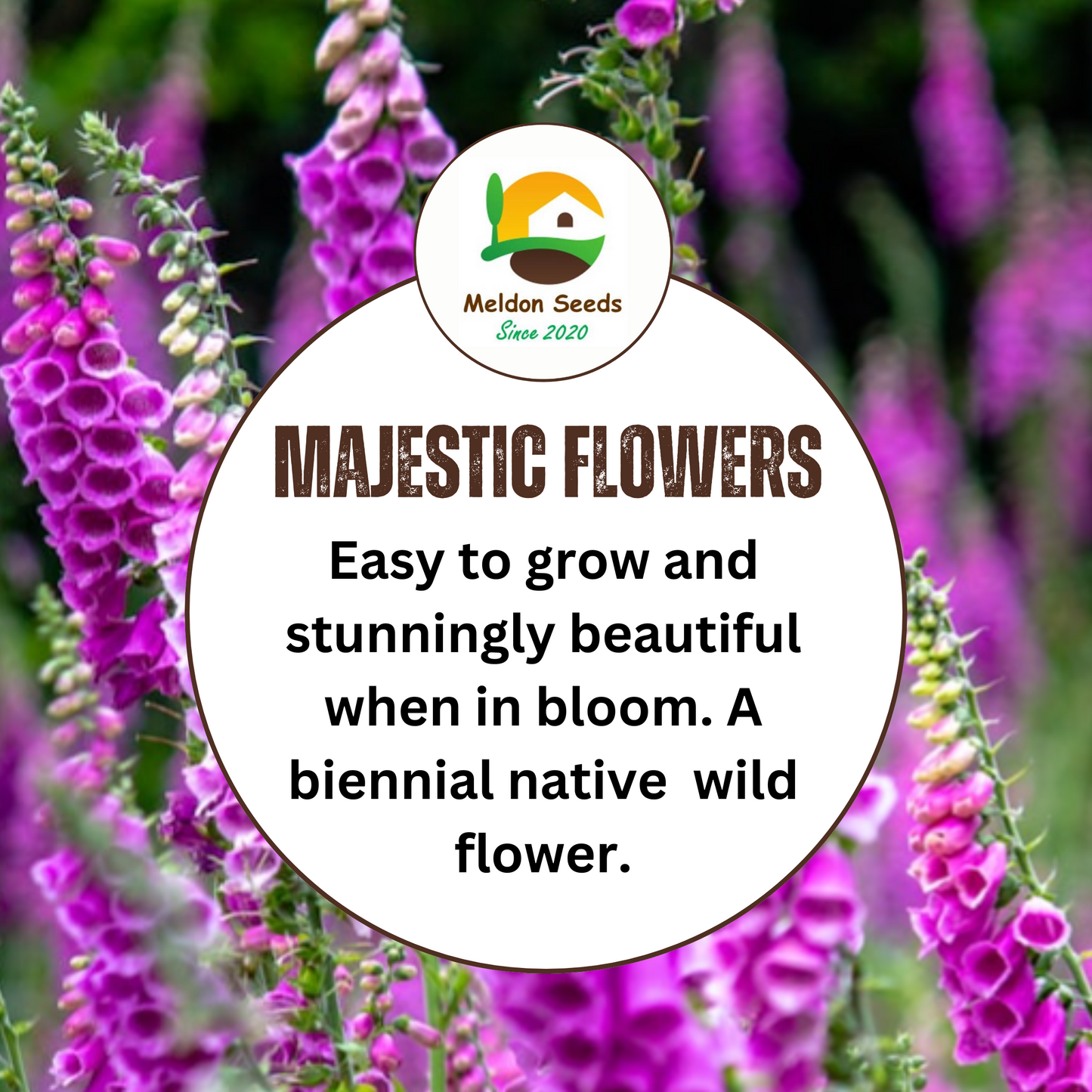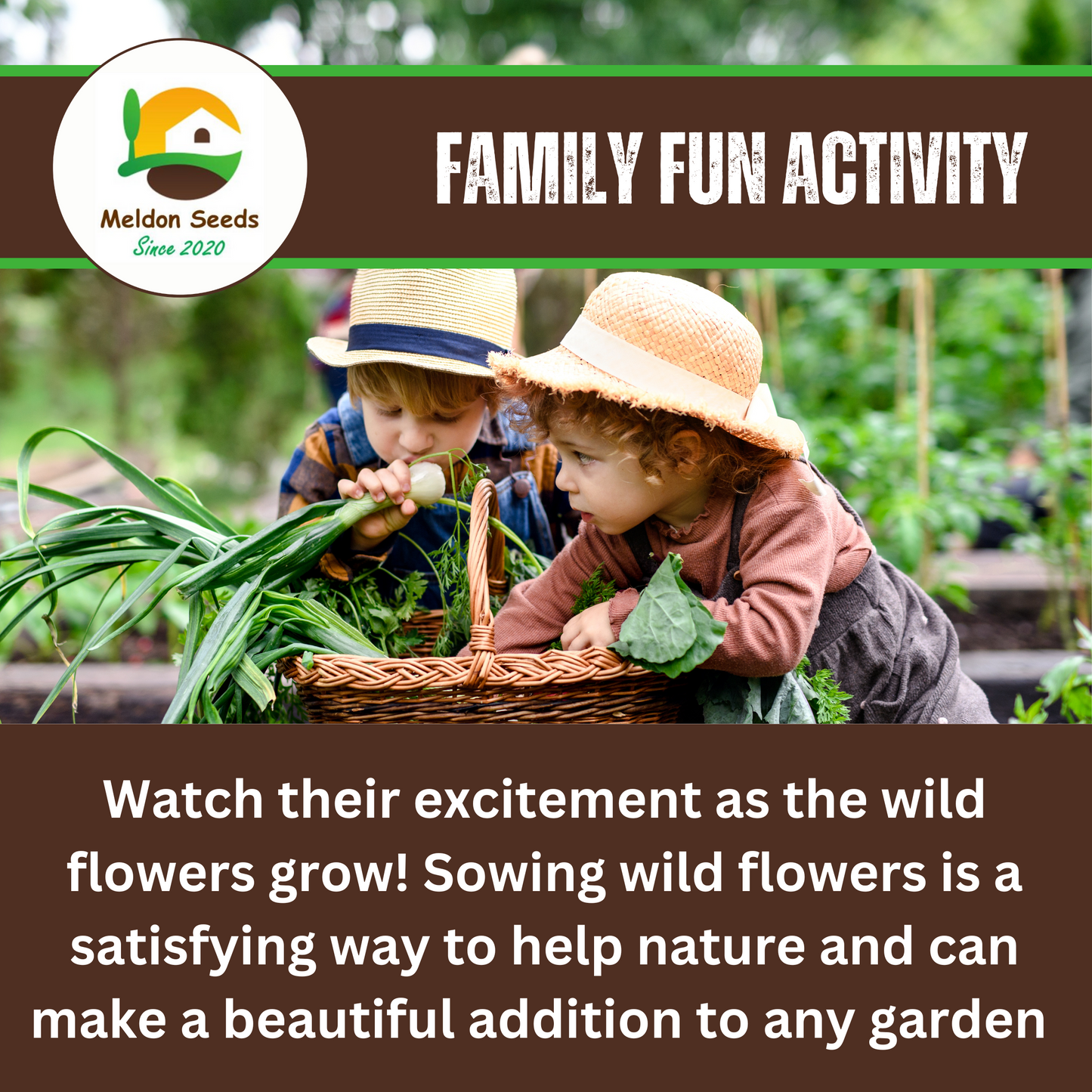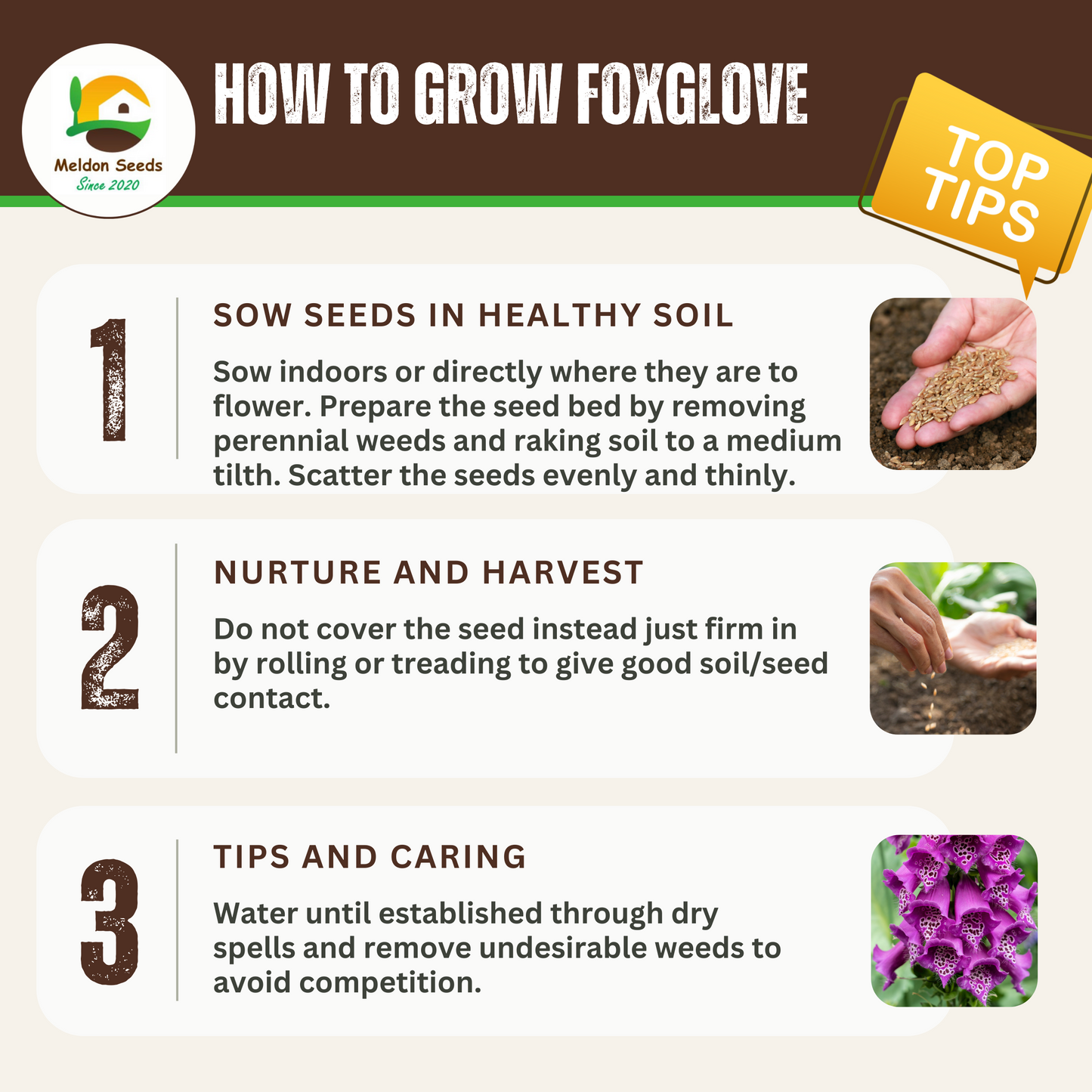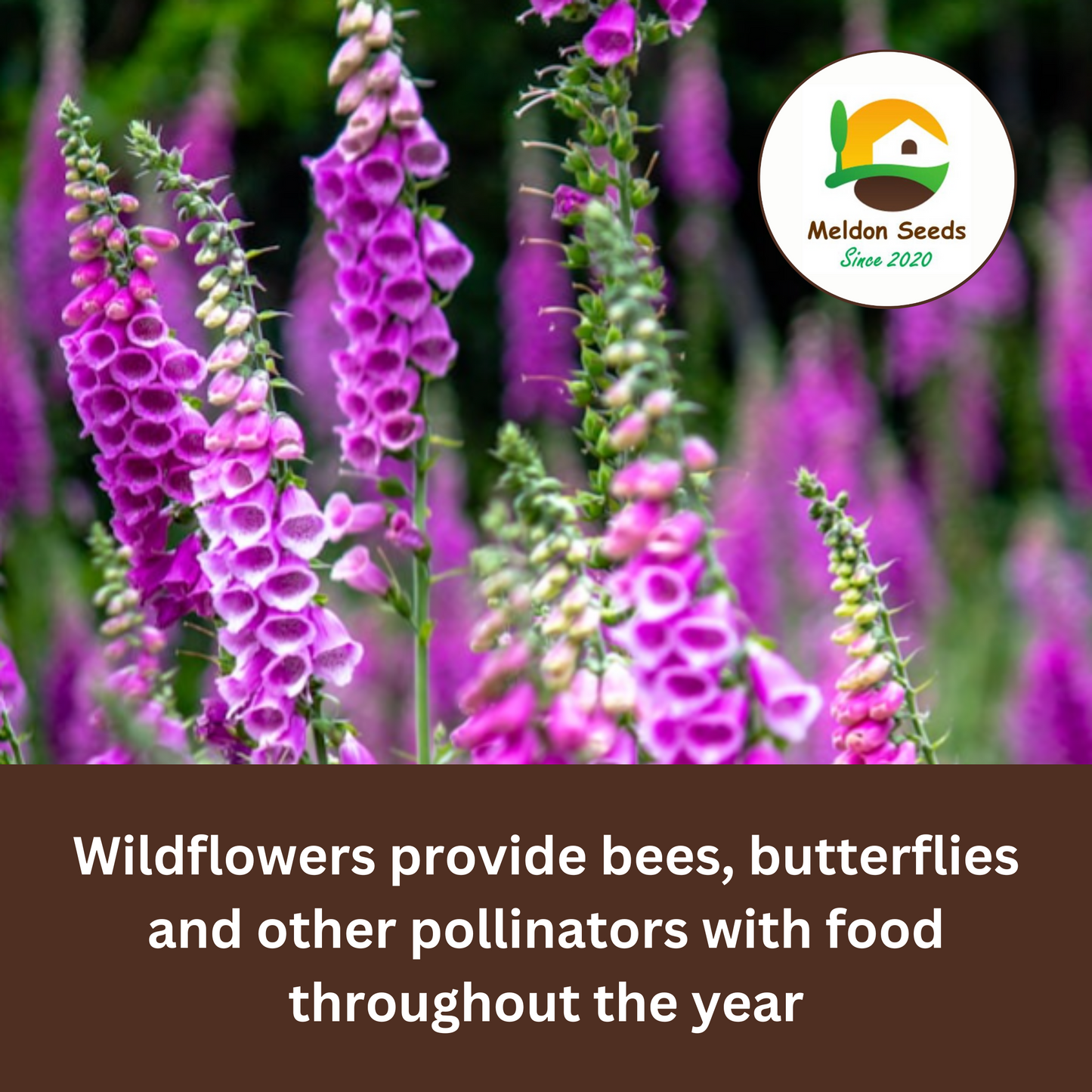Meldon Seeds
Foxglove Seeds - 200 Native UK Wild Flower Seeds for Attracting Birds, Bees, Wildlife, Pollinators, Suitable for Planting and Growing Outdoors in Meadows, Fields, Gardens and Borders by Meldon Seeds
Foxglove Seeds - 200 Native UK Wild Flower Seeds for Attracting Birds, Bees, Wildlife, Pollinators, Suitable for Planting and Growing Outdoors in Meadows, Fields, Gardens and Borders by Meldon Seeds
Couldn't load pickup availability
Foxglove is a majestic biennial wild flower: Easy to grow and stunningly beautiful when in bloom. A hardy biennial native wild flower plant that is a familiar, tall plant, with pink flower spikes and a deadly nature. Flowers from May to August in the year after it is sown. Can grow to around 100-150cm tall in ideal conditions.
Sow April to July.
Flowers May to September.
Packet size 200 seeds approximately
BEES LOVE THIS PLANT: Foxgloves are an important source of pollen for bees. The species has evolved to be especially attractive to long-tongued bees such as the common carder bee. The brightly coloured flowers and dark spotted lip attracts the bee, while the lower lip of the flower allows the insect to land before climbing up the tube. In doing so, the bee will drop pollen from other foxgloves, allowing the plant to reproduce.
HOW TO PLANT: Best sown from April to July indoors or outdoors. Sow seeds approx 0.5cm deep in trays or pots of moist compost and transplant to an open site that does not get too dry in summer or scatter the seed directly onto the fine raked seed bed and firm down well. Water well and keep the young plants weeded. Thin seedlings when large enough to handle and keep moist. For indoor plantings transfer outside in autumn spacing approx 25cm apart.
TOP GROWING TIPS: Foxglove plant seeds sow well in moist conditions whether directly into the ground or using a seed tray. They won’t flower the first year, they’ll spend this time building strength and growing their root systems, and will likely flower once their rosette of leaves exceeds 6 inches wide in the second year. Place in plenty of light for germination and ideal growing conditions.
GO BACK TO YOUR ROOTS: Planting wild flowers is a wonderful way to spend time in your garden, cultivate mindfulness and appreciate the little things just like in years gone by. Working with the earth and growing things is immensely satisfying – teach your children or grandchildren this priceless skill of harvesting food in their own gardens, allotments, greenhouses, inside the home in pots or even in community gardens!
Share
